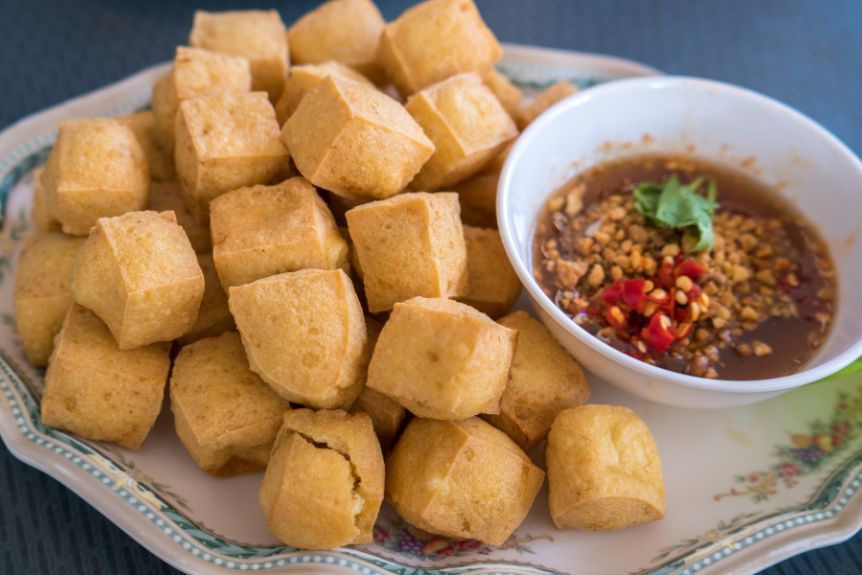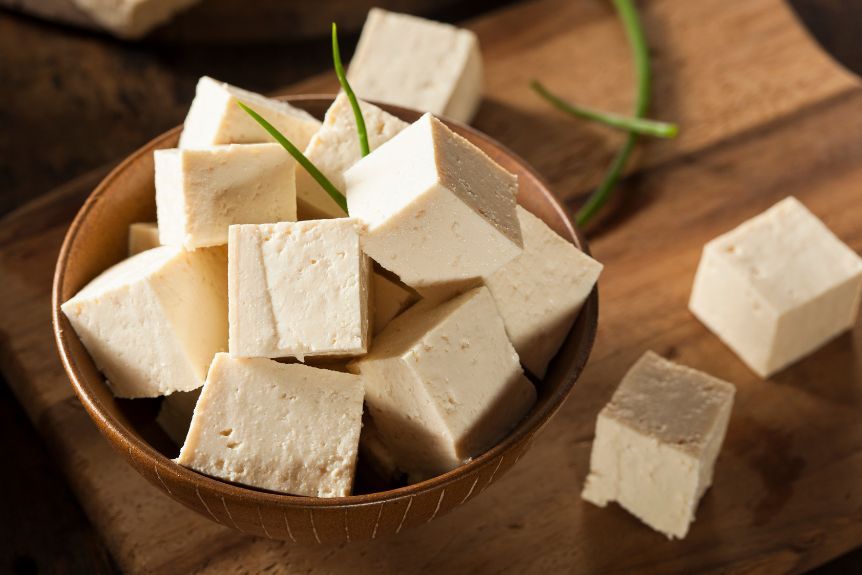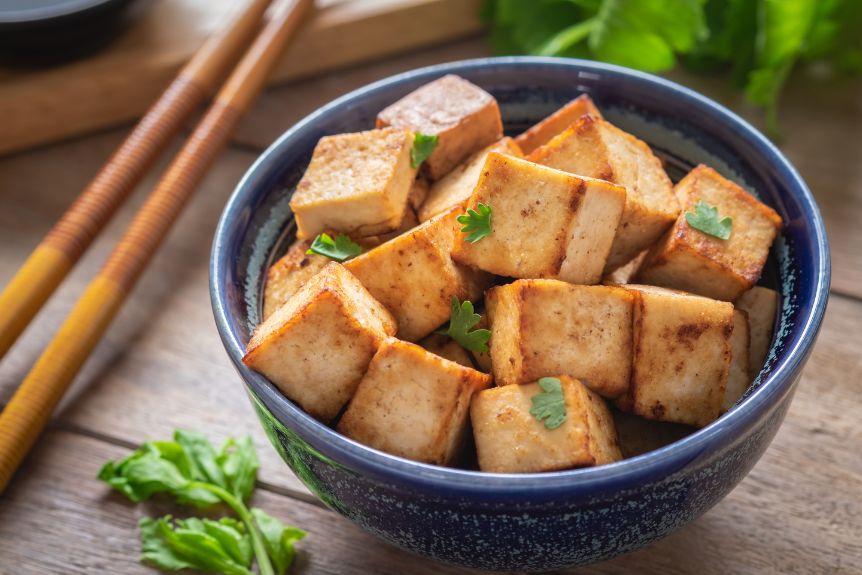Step into the world of Japanese cuisine and get ready to savor the deliciousness of Japanese agedashi tofu. This classic dish has been winning hearts across Japan for ages, and it’s easy to see why.
But what makes this dish so special? Join us on a journey to uncover the secrets behind agedashi tofu and discover why it holds a cherished place in Japanese culinary history.
From its humble beginnings to the nuanced techniques that give it its unique texture and flavor, there’s so much to learn about this timeless treasure.
So, if you’re ready to embark on a gastronomical adventure, join us as we unravel the layers of agedashi tofu and delve into the traditions that enhance its overall experience.
Origins of Agedashi Tofu
Agedashi tofu, a beloved dish in Japanese cuisine, traces its origins back to the Edo period, offering a glimpse into the culinary traditions of ancient Japan.
You must appreciate how this simple yet sophisticated dish reflects a time when meticulous preparation and presentation were paramount.
The Edo period chefs capitalized on the natural flavors of tofu, enhancing its texture with a light, crispy coating before immersing it in a hot dashi broth.
This technique showcased their ability to transform humble ingredients into culinary masterpieces.
To grasp its significance, you need to understand the innovation behind Japanese agedashi tofu. It wasn’t just about frying tofu; it was about creating a harmonious balance between the silky interior and the crisp exterior, paired with the umami-rich broth.
This balance is a testament to the chefs’ skill and their deep understanding of the ingredients at their disposal.
Embracing agedashi tofu means you’re not just enjoying a delicious dish; you’re partaking in a centuries-old tradition that exemplifies the art of Japanese cooking.
It’s a clear reminder that great cuisine often lies in the mastery of simple ingredients, transformed with precision and care. So, as you savor each bite, remember the history and craftsmanship that have shaped this enduring favorite.


Ingredients and Preparation
Understanding the rich history and craftsmanship behind Japanese agedashi tofu sets the stage for exploring its essential ingredients and the meticulous steps involved in its preparation.
You’ll need silky or firm tofu, potato starch, vegetable oil for frying, and a dashi-based sauce typically composed of mirin, soy sauce, and sometimes sugar. Fresh garnishes such as grated daikon, finely chopped green onions, and bonito flakes elevate the dish.
First, you’ll need to drain your tofu properly. This step is crucial; it ensures that your tofu will have the right texture and will fry up nicely. Wrap it in a clean kitchen towel or paper towels and press gently to remove excess water.
Next, cut the tofu into cubes and lightly dust them with potato starch. This coating is key to achieving that desirable crispy exterior while keeping the inside soft and silky.
Heat the vegetable oil in a deep pan over medium heat. Once hot, fry the tofu pieces until they’re golden brown on all sides.
Meanwhile, prepare the dashi-based sauce by simmering mirin, soy sauce, and a touch of sugar. Serve the fried tofu in a bowl, pour the hot sauce over, and garnish with grated daikon, green onions, and bonito flakes.
You’ve now mastered the art of creating a traditional agedashi tofu at home.
Cultural Significance of Japanese Agedashi Tofu
Japan’s culinary heritage shines through in agedashi tofu, reflecting centuries of tradition and cultural significance. This dish isn’t just about taste; it’s a deep dive into the heart of Japanese culture.
You’re not merely eating; you’re partaking in a historical legacy, one that’s been preserved and passed down through generations. Understanding agedashi tofu’s place in Japan’s culinary world gives you control over appreciating its depth and nuances.
The dish stands as a testament to the ingenuity of Japanese cuisine, utilizing simple ingredients to create a symphony of flavors. It’s a celebration of minimalism and perfection, principles highly valued in Japanese culture.
By choosing to explore Japanese agedashi tofu, you’re embracing these cultural ideals, gaining insight into the aesthetic and philosophical underpinnings that shape Japanese life.
Moreover, agedashi tofu’s popularity across various regions showcases the unifying power of food in Japan. It’s more than a dish; it’s a shared experience that ties you to the cultural fabric of the country.
As you dig into its backstory and significance, you’re not just eating; you’re soaking in a bit of Japan’s essence, deciding how closely you want to tie yourself to this vibrant cultural heritage.


Regional Variations
Diving into the regional variations of Japanese agedashi tofu, you’ll discover how local flavors and ingredients give this classic dish a unique twist in each part of Japan. You’ve got the power to transform this traditional dish to match the taste of any region you’re keen on exploring.
In Kyoto, for instance, they often incorporate shiso leaves for a herbaceous note, allowing you to savor a more aromatic version.
Heading north to Hokkaido, the preference shifts towards a richer experience. They might add sea kelp or local seafood to the broth, making it a heartier dish that you can tailor to your liking for those colder nights.
On the southern side, in Okinawa, you’ll encounter a sweeter variation. They often mix in brown sugar or a splash of Awamori (a local spirit), which you can adopt to sweeten things up a bit.
You control the twist you want to give to your agedashi tofu. Whether it’s embracing the umami-packed version of Tokyo by adding more dashi and mirin or leaning towards a minimalist approach popular in rural areas, where simplicity is key, the choice is in your hands.
Experiment and master the regional nuances to redefine this beloved dish on your own terms.
Serving Traditions
When you serve Japanese agedashi tofu, it’s all about the presentation and the garnishes that turn this simple dish into a culinary masterpiece. You’re in control, deciding on the depth of flavors and the visual appeal.
Start with a carefully selected dish, one that complements both the color and the texture of the tofu. The key is in the balance; you don’t want the dish to overshadow your creation.
Next, focus on the garnishes. They’re not just decorations; they’re integral to the experience. Thinly sliced green onions, delicate bonito flakes that dance from the heat, and a light drizzle of soy-based broth are essential.
Each element must be placed with precision, ensuring every bite is a harmonious blend of flavors and textures.
Conclusion
In wrapping up, you’ve journeyed through the delightful tradition of Japanese agedashi tofu, from its origins to the regional twists that make every bite a new discovery.
You’ve learned how simple ingredients blend into a dish steeped in cultural significance, highlighting the art of Japanese cuisine.
As you explore these serving traditions, remember, every piece of agedashi tofu carries a story, a tradition, and a flavor profile that’s uniquely its own.
But, as with any culinary tradition, there are always varying opinions. Some argue that agedashi tofu lacks the complexity and depth of other Japanese dishes, while others believe it to be a true masterpiece.
What’re your thoughts? Do you agree or disagree? Leave a comment below and let’s know your perspective on this beloved Japanese dish.
Now, it’s your turn to dive into this culinary adventure.





Konnichiwa! (Hello!) I'm Pat Tokuyama, a Japanese tofu cookbook author, who travels for music, food, and adventure. If you like Japanese tea, checkout some of the newestorganic japanese tea, matcha bowls and noren and more!
** Curious about the Plant Based Japanese Cooking Club? ** Learn more here!